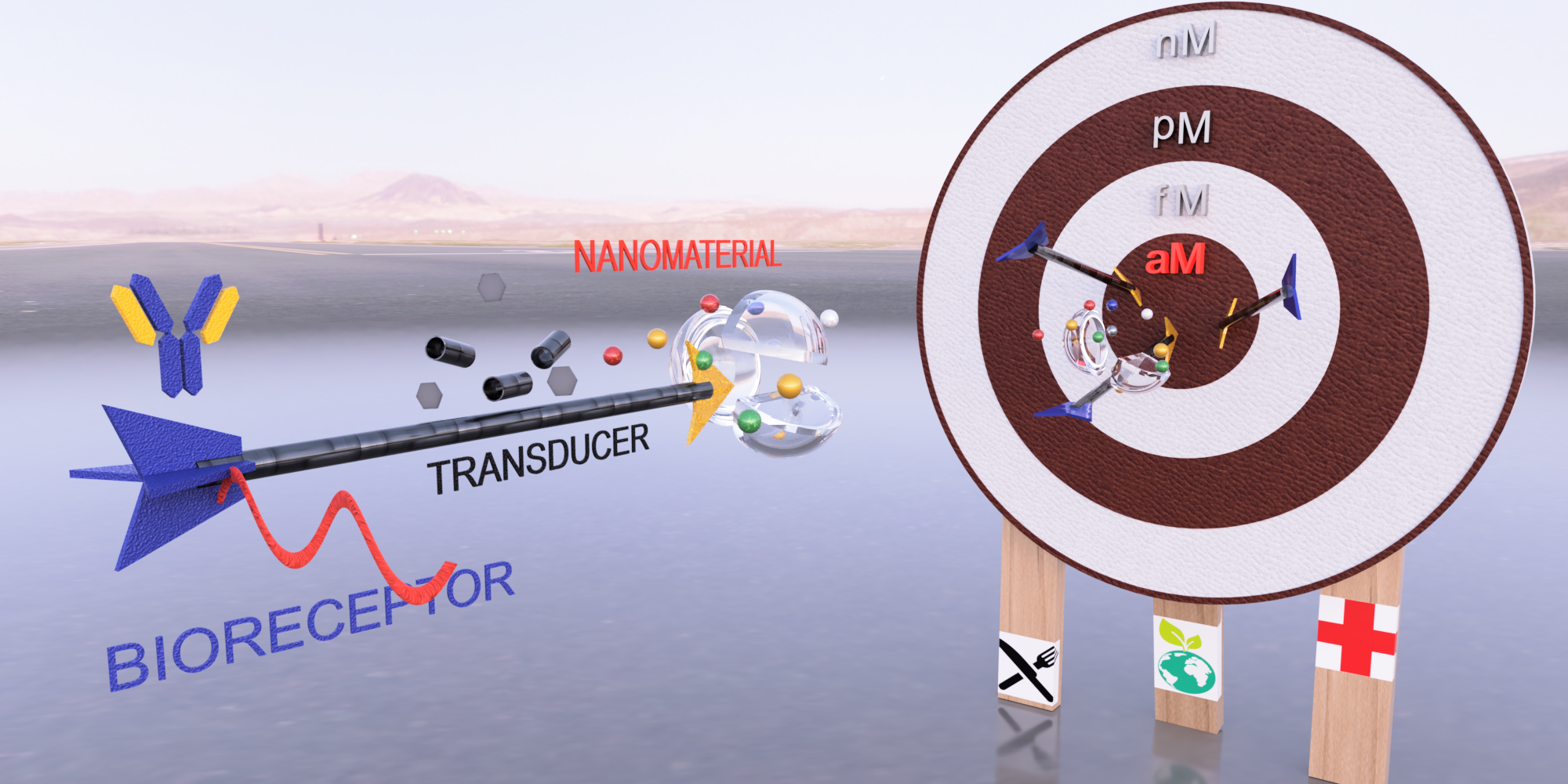Thursday, 13 January 2022
State of the art and prospects in AttoSens, techniques for detecting ultra-low concentrations of analytes
A paper in “Chemical Society Review” discusses the progress over the last ten years in the development of biological and chemical sensing platforms for the detection of target analytes at ultra-low abundance level (attomolar). This work was coordinated by ICN2 group leader ICREA Prof. Arben Merkoçi and Prof. V.V.R. Sai, from the Indian Institute of Technology Madras (IITM).

Being able to detect the presence of extremely low concentrations of certain analytes in biological fluids, water, soil and food can have a dramatic impact, respectively, on the early diagnosis and monitoring of diseases in humans and on the detection of harmful substances in foodstuff and the environment. The identification and quantitative measurement of molecules at an attomolar (aM) abundance level –i.e. a concentration of 10-8 moles per litre, which corresponds to few hundreds of molecules in a few tens of microlitre sample volume— are extremely challenging and require the development of biological and chemical sensors exhibiting very high sensitivity and selectivity. Much effort has been put in this quest by various groups of researchers, who have adopted different approaches to improve the performance of sensor platforms and come up with new solutions.
An extensive overview of the progress made over the last decade in Attomolar Analyte Sensing Techniques (a field of research referred to as AttoSens) is provided in a paper published in Chemical Society Reviews and authored by researchers from the Catalan Institute of Nanoscience and Nanotechnology (ICN2) and the Biomedical Engineering Department of the Indian Institute of Technology Madras (IITM). This work was coordinated by ICREA Prof. Arben Merkoçi, leader of the ICN2 Nanobioelectronics and Biosensors Group, and Prof. V.V.R. Sai, from IITM. First author of the paper is Dr Sruthi Prasood Usha, postdoctoral researcher at IITM.
The review starts defining the concept of ultra-low abundance measurements, highlighting their relevance in the medical, environmental and agro-food fields as well as the technological problems that they pose. Then, a central body of tree sections is dedicated to the key elements that constitute a bio-chem-sensing platform. Here, various formats of sensing assays are presented, distinguishing two principal approaches: label-free and labelled detection. In the first case, the concentration of the analyte of interest is directly measured, while in the second a “foreign” molecule able to attach to the analyte target is used to allow the process. The role played by nanomaterials of various geometries and molecular reagents, which act as signal amplification agents, is explained in this context. The function of different receptors, which recognize specific analytes and bind them on the detector surface, is also analysed, given their relevance in determining the specificity and selectivity of a sensor. Natural receptors are, for example, antibodies, enzymes, nucleic acids and glycol-proteins, but also synthetic receptors, such as oligo-nucleotides and synthetic peptides, can be used. Then, different types of transducers, which generate a quantifiable output signal that is proportional to the receptor-analyte complex concentration, are introduced.
Once all these relevant concepts and parameters to take into account are presented, the authors move on to a comprehensive discussion on the numerous examples of sensing platforms for attomolar detection of analytes reported in scientific journals in the last decade. These technologies are examined in relation to their field of application, in clinical diagnostics for a variety of diseases, in environmental monitoring and in agro-food safety. To conclude, a summary is provided of the challenges still to be faced and future prospects for research in this field. Such a thorough review will certainly represent a useful starting point for researchers approaching this compelling topic.
Reference article:
Sruthi Prasood Usha, Hariharan Manoharan, Rehan Deshmukh, Ruslan Álvarez-Diduk, Enric Calucho, V. V. R. Sai and Arben Merkoçi, Attomolar analyte sensing techniques (AttoSens): a review on a decade of progress on chemical and biosensing nanoplatforms. Chem. Soc. Rev., 2021,50, 13012-13089. DOI: 10.1039/D1CS00137J

